UJA Federation of New York
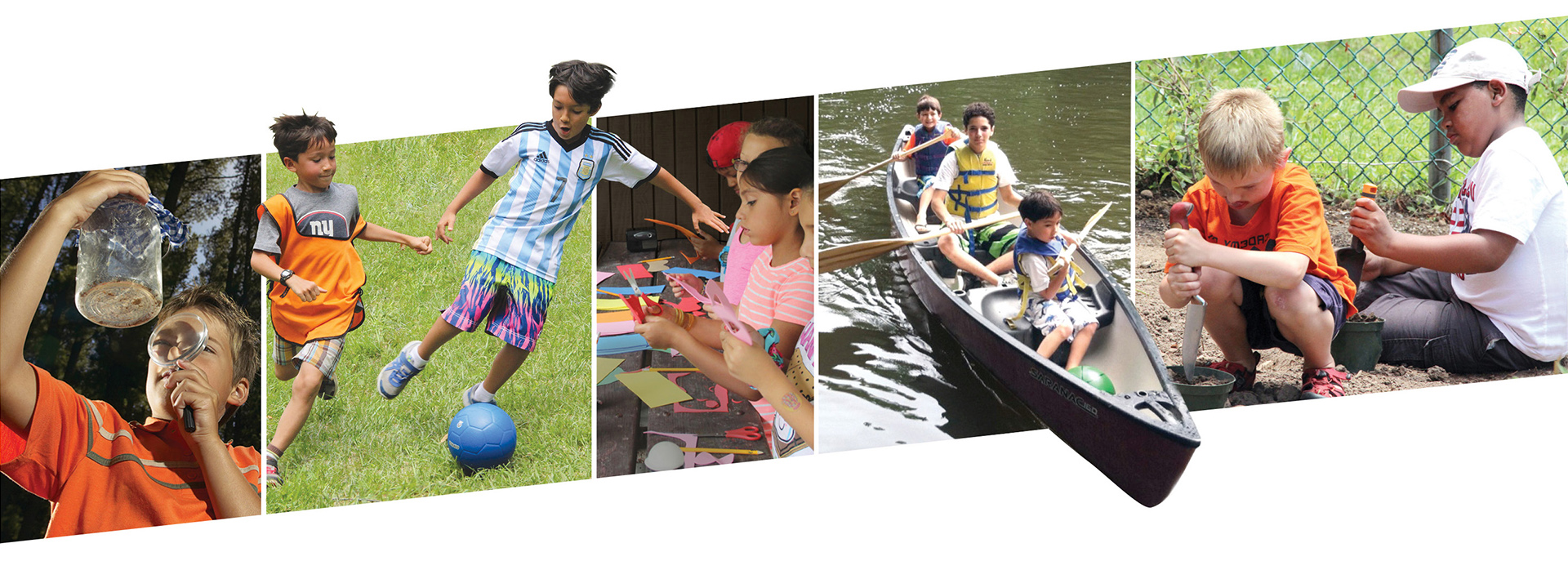
Merging Three Camps Into One Leads to Increased Enrollment
Three well-respected day camps were merging into one while introducing a new camping model. They needed to maintain current campers and gain new ones. We helped them do that.
Services
- Discovery
- Brand Positioning
- Messaging
- Naming
- Visual Identity
- Consumer Testing
- Marketing Collateral
- Website
Challenge
The three camps that make up the new camp are each long-time providers of Jewish camping experiences. One challenge was maintaining the loyalty and respect of existing supporters while igniting enthusiasm for the new organization. The additional challenge was introducing a new camp model in which campers choose one track of activities for a week at a time. The camp also had to appeal to Jewish campers without putting off non-Jewish ones. Equally important is a name that embodies the values of the new camp in a process that generates buy-in from existing stakeholders. Red Rooster Group worked with the three entities to craft a unified brand to successfully launch the new camp.
Discoveryy
Our process began with a Discovery Phase which lays the foundation for the name, logo, branding, and marketing strategy. This provided a deep understanding of all the organizations involved in this merger and a clear picture of the potential market for the new camp. Discovery included interviews, competitive reviews, and a review of existing research that had been done for the camp merger.
Discovery Findings
The three existing camps share many attributes including position, values, and goals. Their common denominators were:
- Commitment to quality programming and staff.
- Dedication to Jewish values.
- Reputation as best option in local area for the price.
- Community, personal feel, familiarity.
Current equities: quality reputation of delivering on promise, trust, reliability, child-centric, focused, customer service and communications, ”best game in town.”
The research also uncovered unique differences for each of the three existing camps that had to be reconciled in the brand. For example, parents at one of the institutions based in the city felt a strong need for their children to be outside and in green space. At the entity in NJ, the population was homogeneous, contrasting with the diversity in the city. The third camp had a more educated and more Jewish/religious population.
- Current camper base is more than half non-Jewish or unaffiliated Jewish families.
- Parents are looking for their child to be safe, grow, learn to be better human beings, feel good about themselves, make friends, and have fun.
- They are looking for a camp that will provide a long day of coverage, safety, convenience, attractive pricing – many campers are on scholarships.
- Child is engaged, busy, happy, making friends, learning, and growing emotionally.
- Middle class working families prefer quality experience over bells and whistles.
- Trend in short-term attendance at specialty camp instead of camp all summer.
- Highly competitive focus on a single area in specialty camp can cause burn out.
- Private camps are significantly more expensive, have ”brand name” instructors, many ”bells and whistles.”
- Town camps are significantly less expensive with corresponding limited facilities and programming.
- Competition is increasing from summer programs at schools and synagogues as well as community offerings.
- The new camp will hold a center position at the crossroads between expensive to inexpensive, and specialty to traditional.
- Offers what the expensive camps have at an affordable price.
- Serves campers who wants a specialty experience without giving up other activities.
- The pre-eminent place in the area to send your child.

Positioning
Goals
The camp’s marketing goal is to increase the collective camp attendance by 300 to 800 in 2015. Reaching this goal requires raising awareness of the new brand and the value of the camping experience it offers while communicating a consistent narrative about the new entity formed from three different organizations.
Brand Positioning
We wrote a brand positioning statement to set the new camp apart from other camps serving families — both Jewish and non-Jewish — in the Upper Manhattan-Bronx-Tarrytown area. In developing the new camp’s messaging, we explored the concepts from the Discovery Phase to clearly differentiate the new camp from its competitors and appeal to parents.
Brand Positioning Statement
New Camp provides your children with a well-rounded summer day camp experience where they get to choose specialty programming that interests them while also enjoying all of the other activities that you would expect from a camp. Because this new model offers campers freedom of choice, it also aids families in making the best camp choices for their children.
Like choosing a major at college, children select from different “Neighborhoods” or “pockets of interest” for a week at a time, allowing them to explore new activities, learn new skills, and strengthen those they already have. This Neighborhood concept allows campers to focus on their favorite specialty area and then to explore other areas if they want to. Deep friendships evolve as the children explore these activities with others kids who share their interests. The Neighborhoods include: Fitness and Athletics, Arts and Drama, Science and Nature, Outdoor Adventure, and Farm to Table
Campers spend their time in a warm, nurturing environment where the framework of Jewish values actively teaches them to care for their bodies, the environment, and for other people.
Naming
Naming
The camp’s name is the first point of contact with parents and campers. It must convey something that makes people — staff as well as parents — want to engage with the organization. The new camp needs a name and tagline that accurately represents the new organization and can serve as a foundation for growth.
Naming Process
Our process is to generate a wide-ranging selection of names and home in on those that meet the naming criteria.
- We wrote a Creative Brief that described the naming criteria that had been determined through the Discovery process.
- We collected the names of 1,000 camps, analyzed them and found that they could be sorted into 8 different categories, providing a framework for exploring potential camp names.
- We then generated hundreds of name ideas for the camp, exploring a range of different types of names, from Descriptive to Evocative. The names explored how to communicate some level of Judaism without being too overt.
- After rounds of refinement and vetting to eliminate names that had conflicts with other entities, we presented a refined list of names for consideration.
- After review by the three decision-makers and others from the three entities, three names were selected for field testing.
Refined List of Names
Camp Mavenhood
Camp Mavenwood
Camp Twelve Trails
Camp 12 Stones
Camp Starpoint
Camp Blue Jay
Camp Cluster
Camp Oola, Oola Day Camp
Camp Kiskadee
Camp Plentifun
Fantastikids Day Camp
Camp Visioneer
Camp WonderQuest
Camp WonderScope
Camp Wonderville
Three Names Selected for Testing
Camp Twelve Trails
Camp Starpoint
Camp Oola
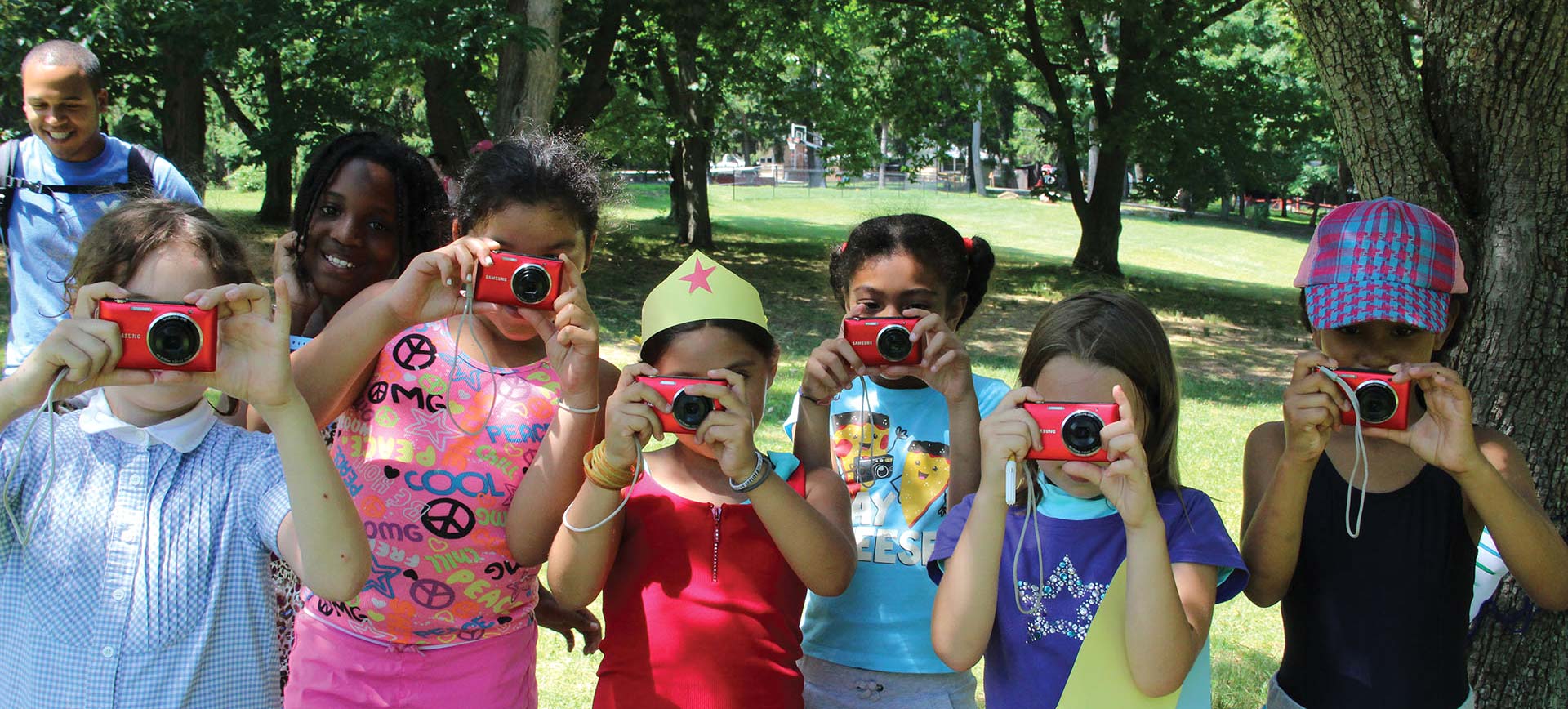
Developing the Concepts
To bring the names to life, we developed conceptual approaches for each of the names to show the logos and overall visual direction for the marketing materials.
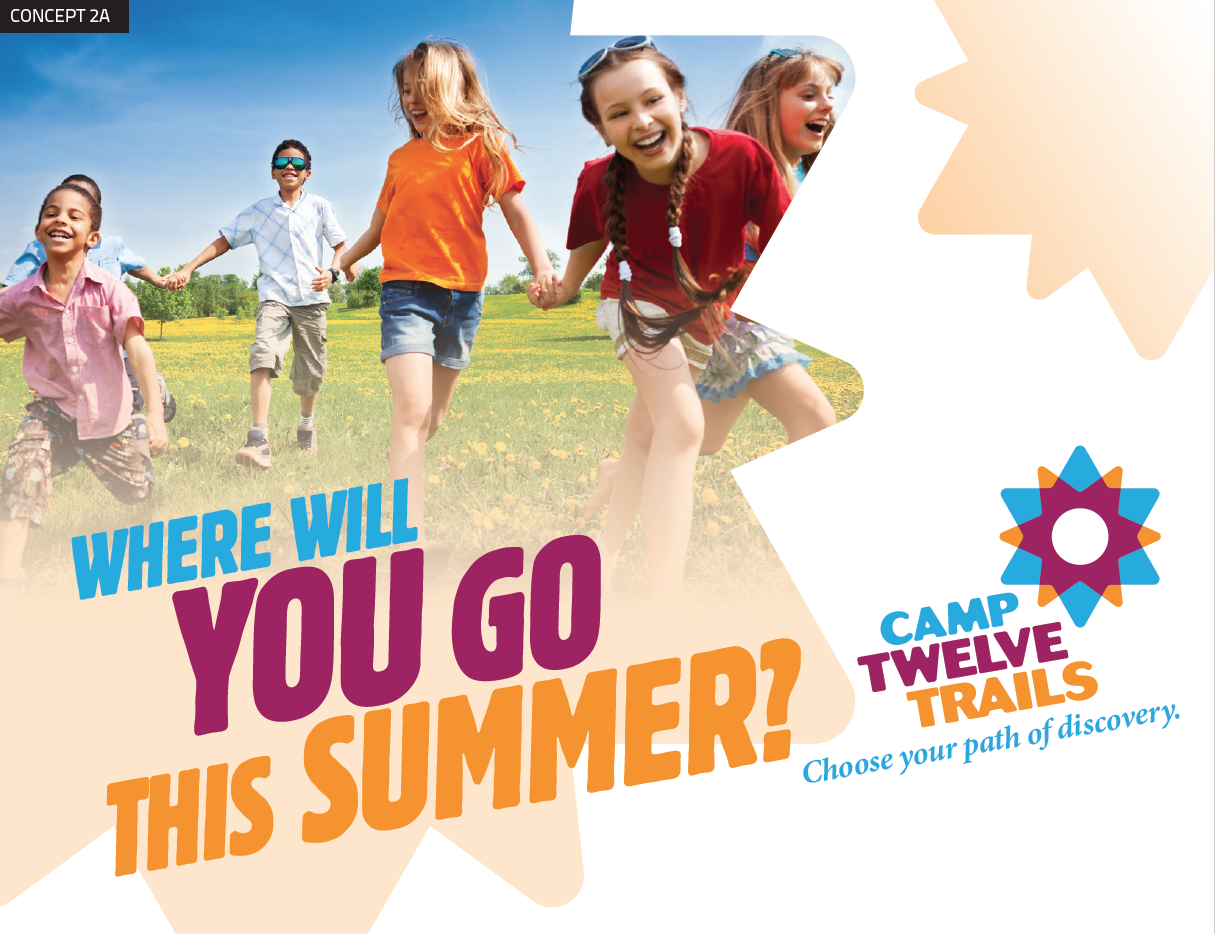
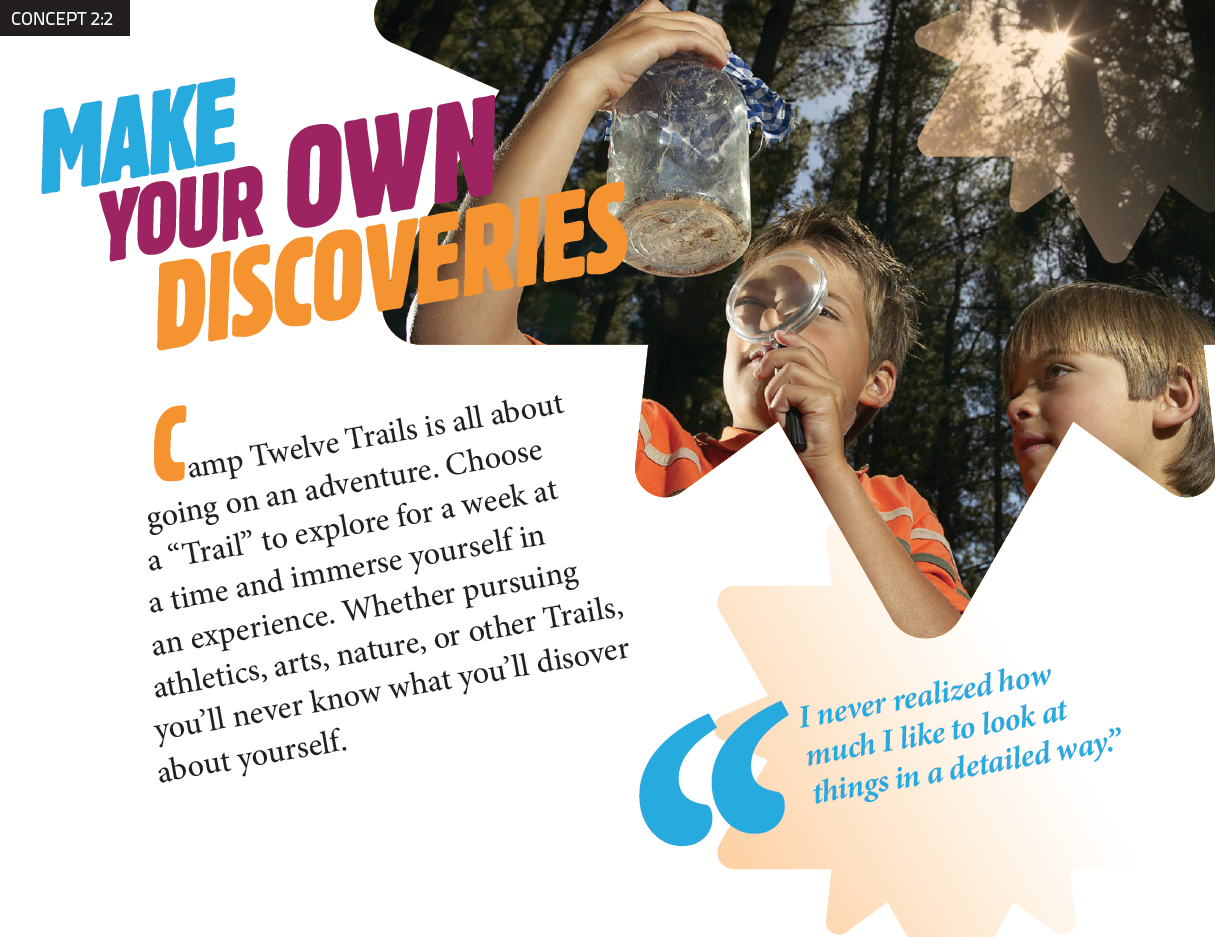
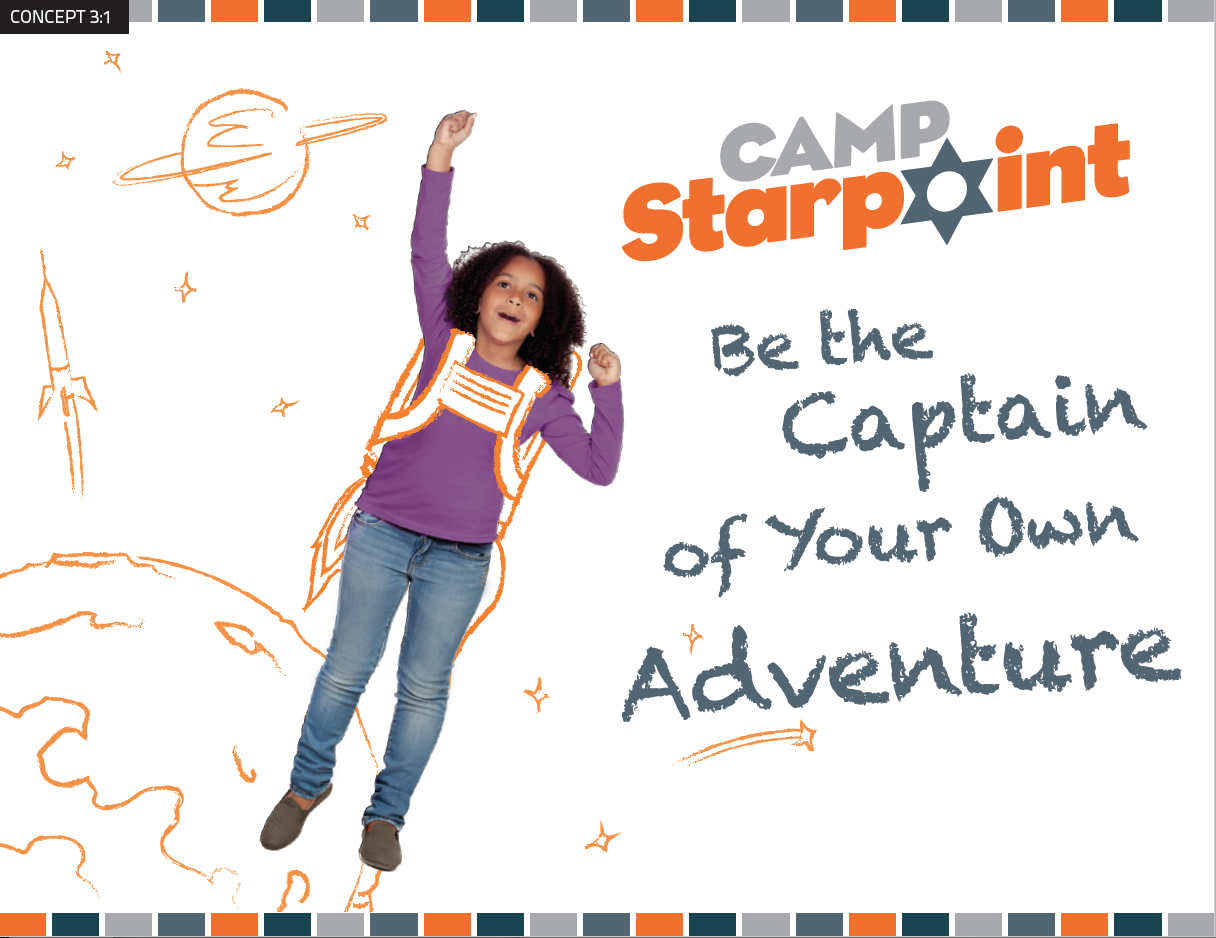

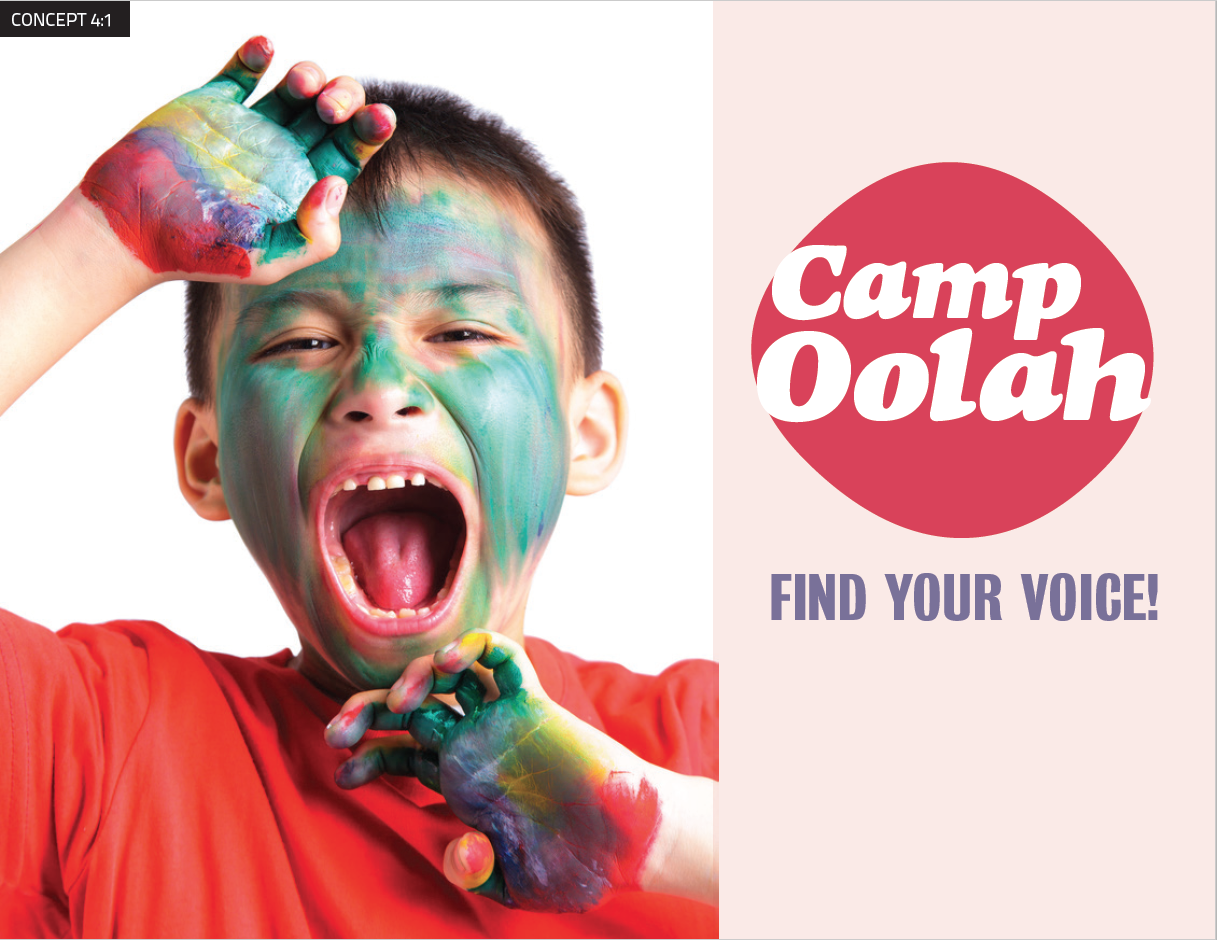
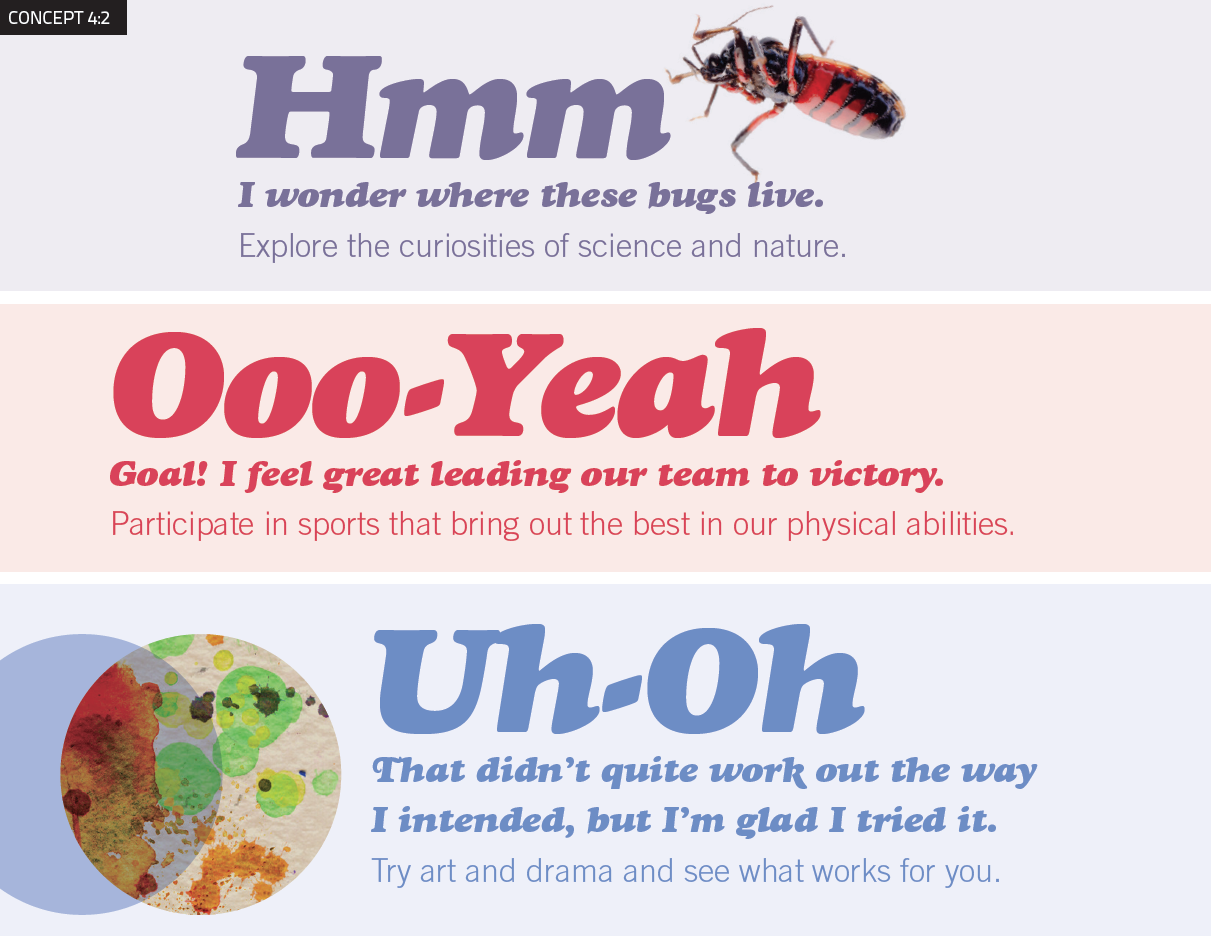
Getting Parent Feedback
We gathered feedback on the concepts from parents at the venues. The questionnaire was carefully crafted to ask people to rate the concepts based on how well they met specific criteria, allowing us to evaluate which concept best met the camp’s needs rather than just gathering subjective opinions.
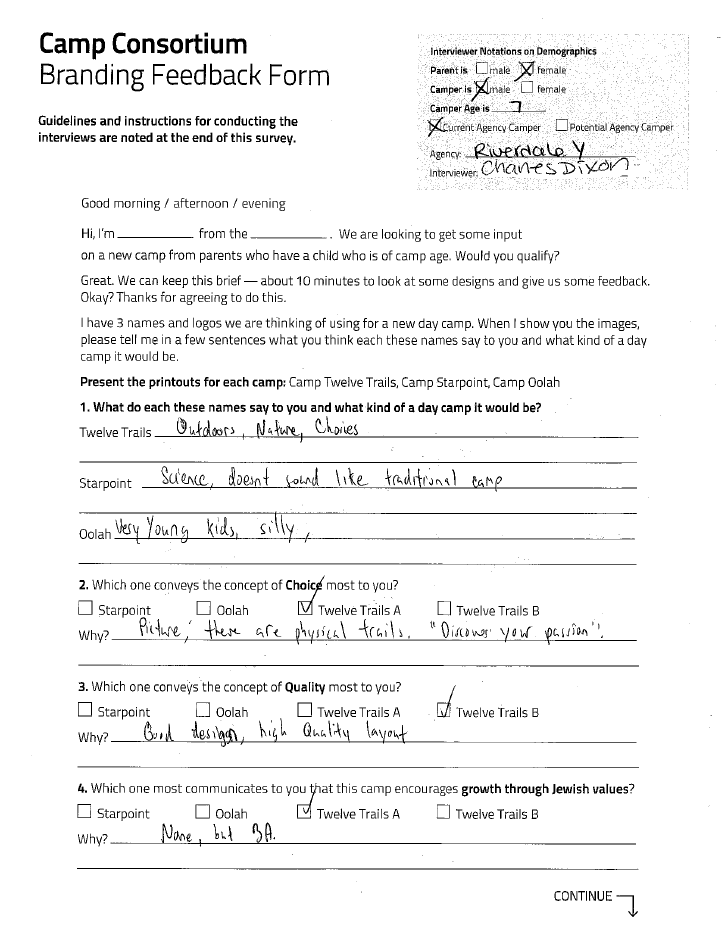
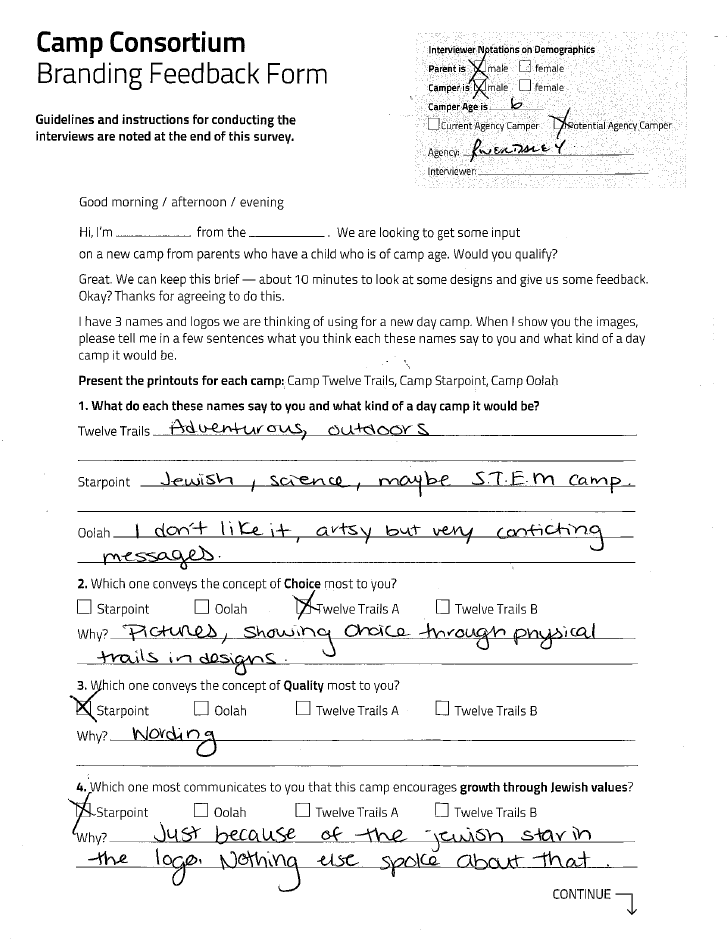
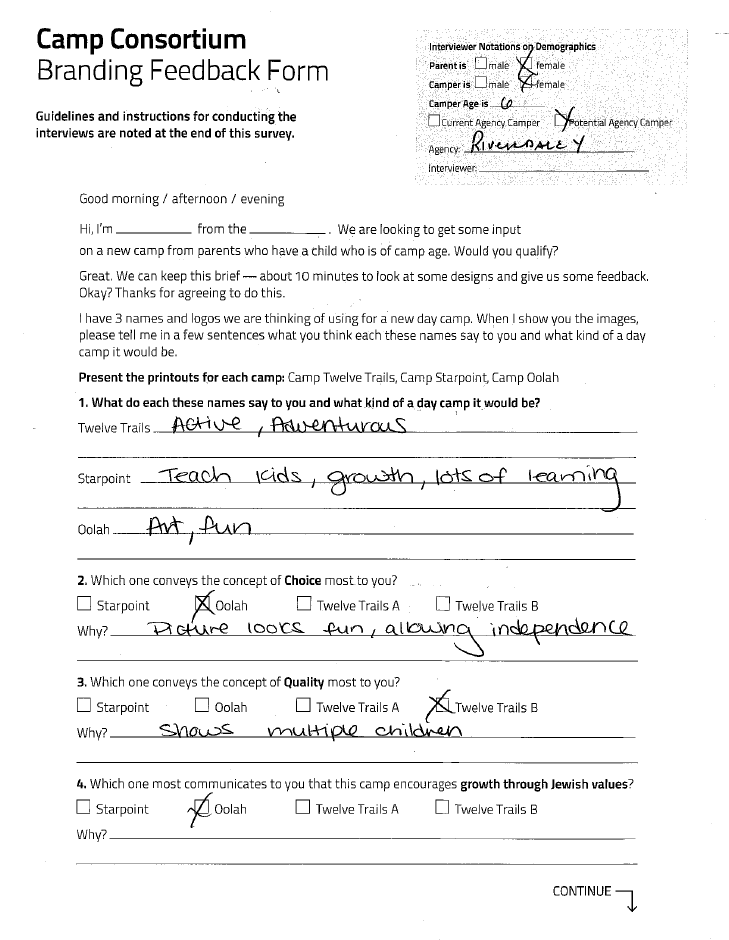
Selected Name & Visual Approach
Camp Twelve Trails was the name chosen to best convey the array of choices and adventure that campers face, with a subtle reference to the twelve tribes of Israel. A sense of Judaism is also subtly conveyed in the logo — two overlapping Jewish stars create a compass with 12 points.
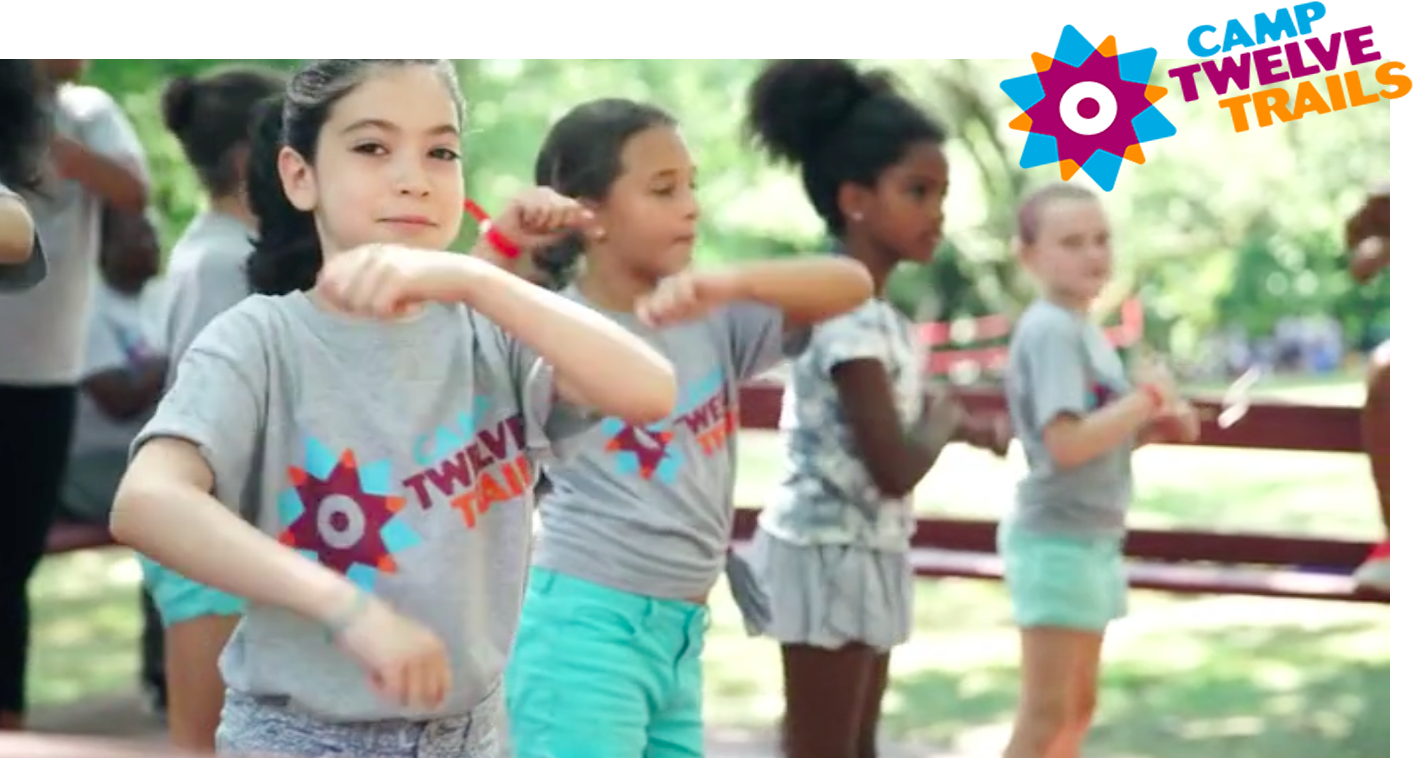
Brand Manual
To help the camp manage their brand, we developed a Brand Manual that describes the brand elements and shows correct and incorrect ways to use the logo. The package also contains a full set of logos created for use in print and online.
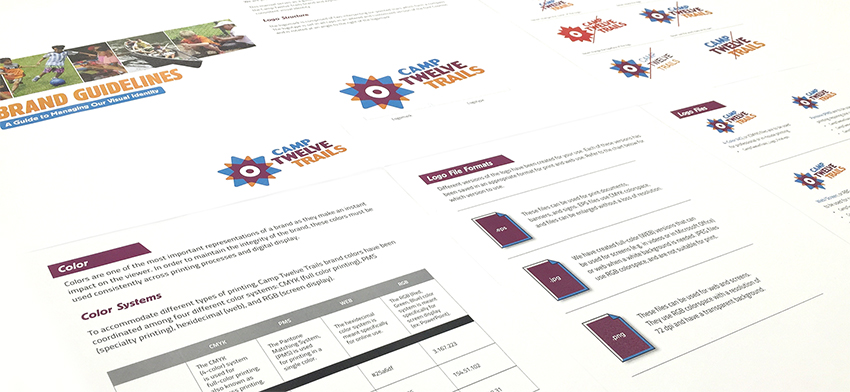
Brochure
We wrote and designed a brochure to showcase the camp’s unique Neighborhood model, which allows campers to select one specialization for a week at a time. The brochure addressed the issue of connecting to the three merging organizations, and addressed the camp’s Jewish values in a section called Our Philosophy. The visual look of the brochure established the look for the website.
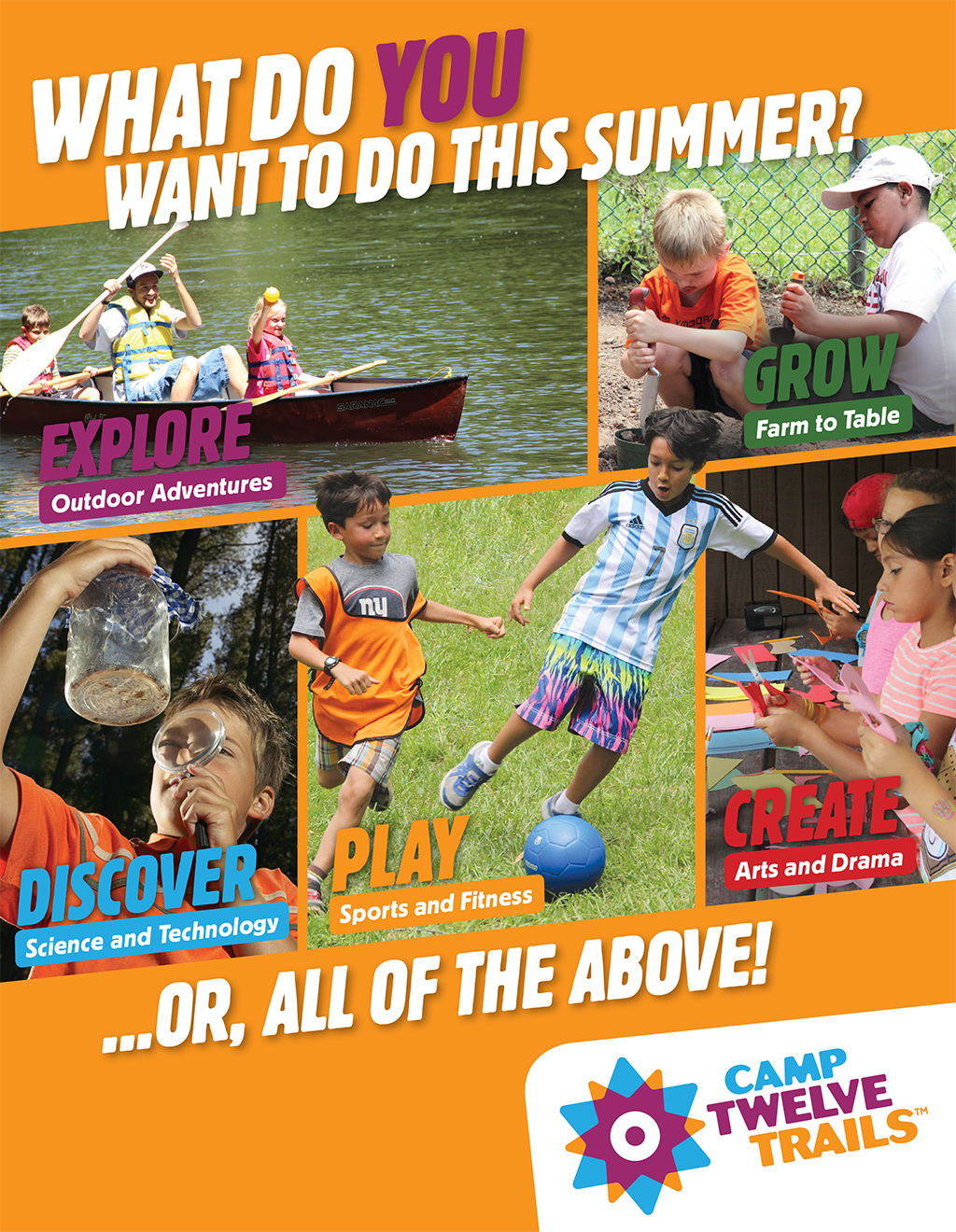
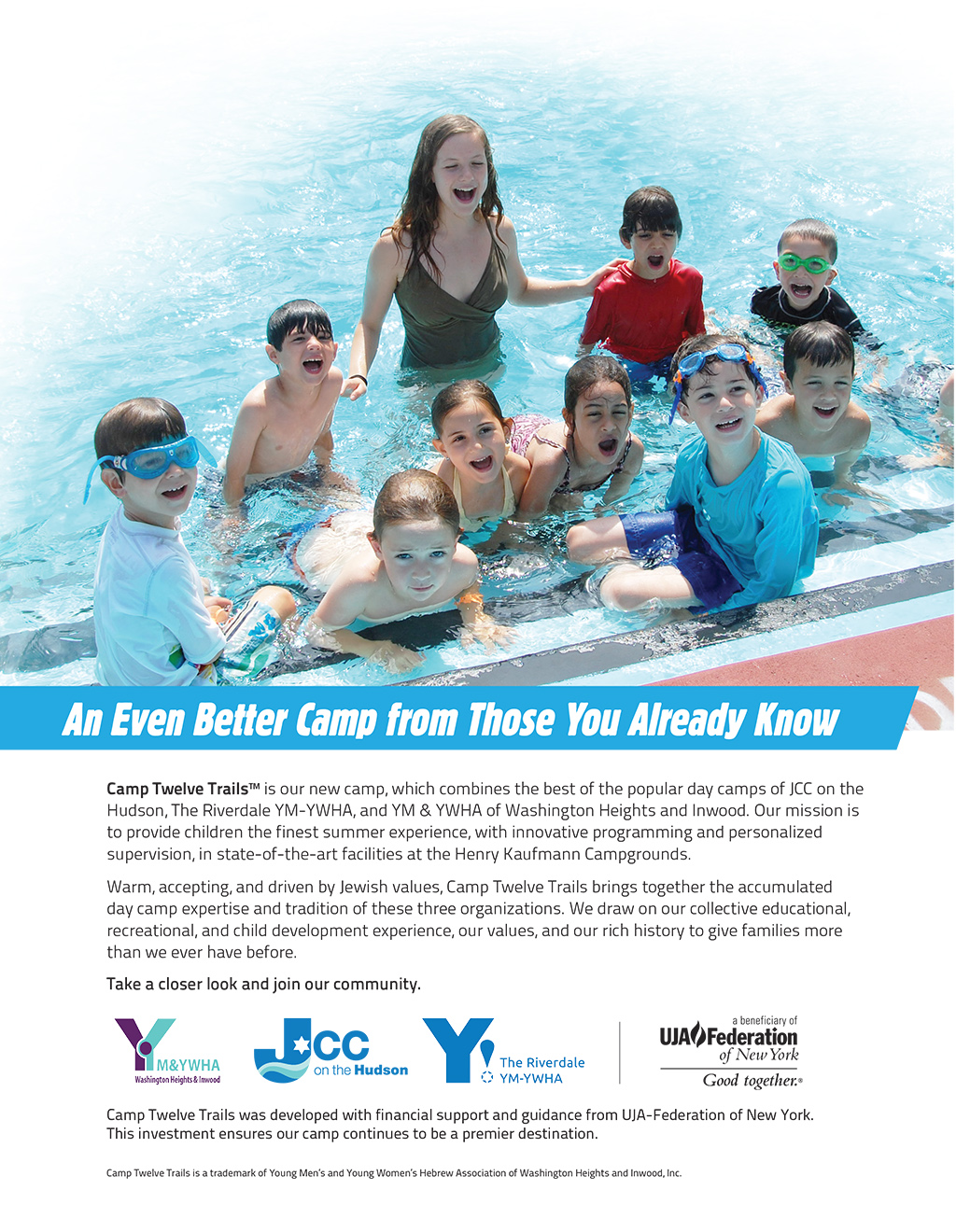
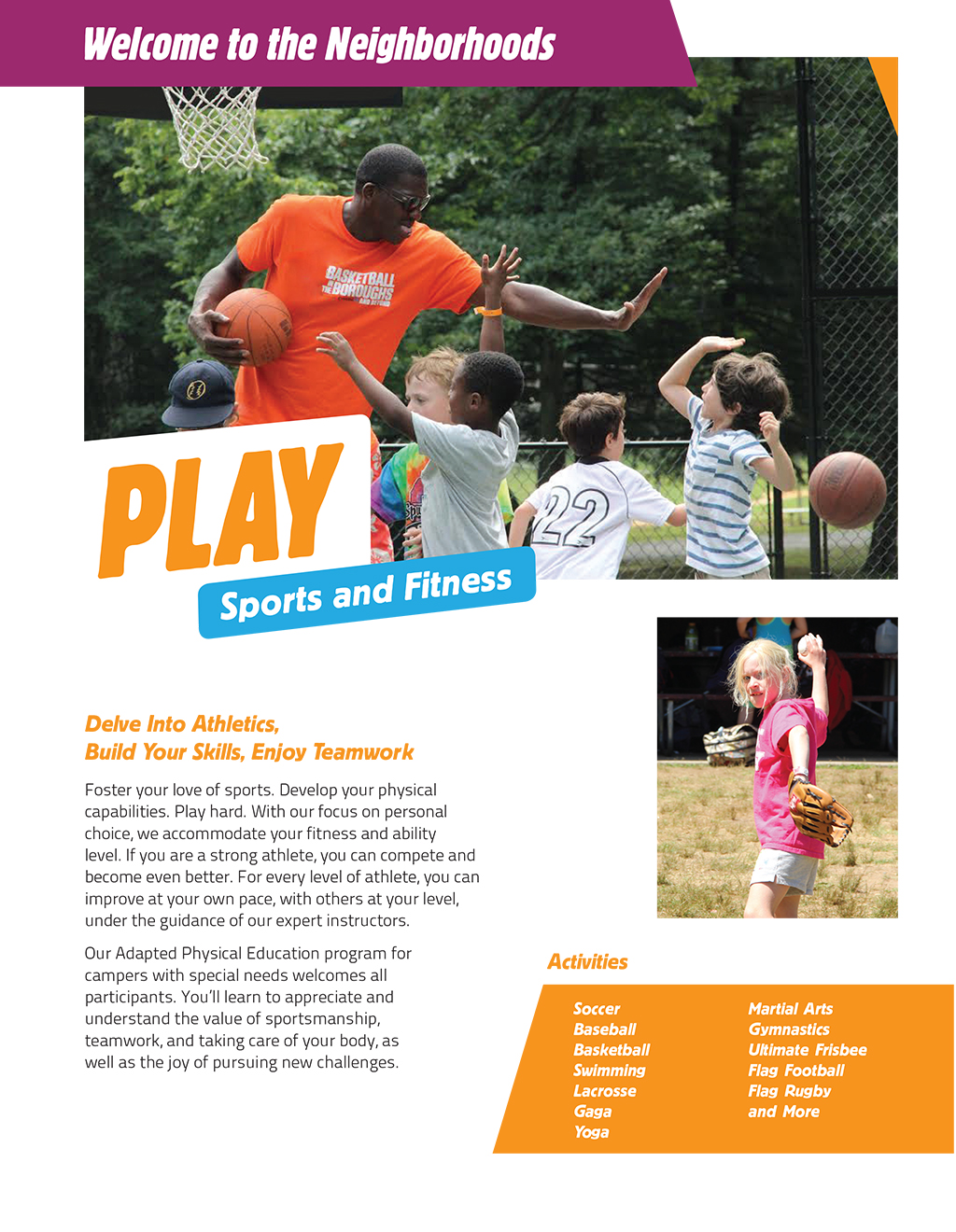
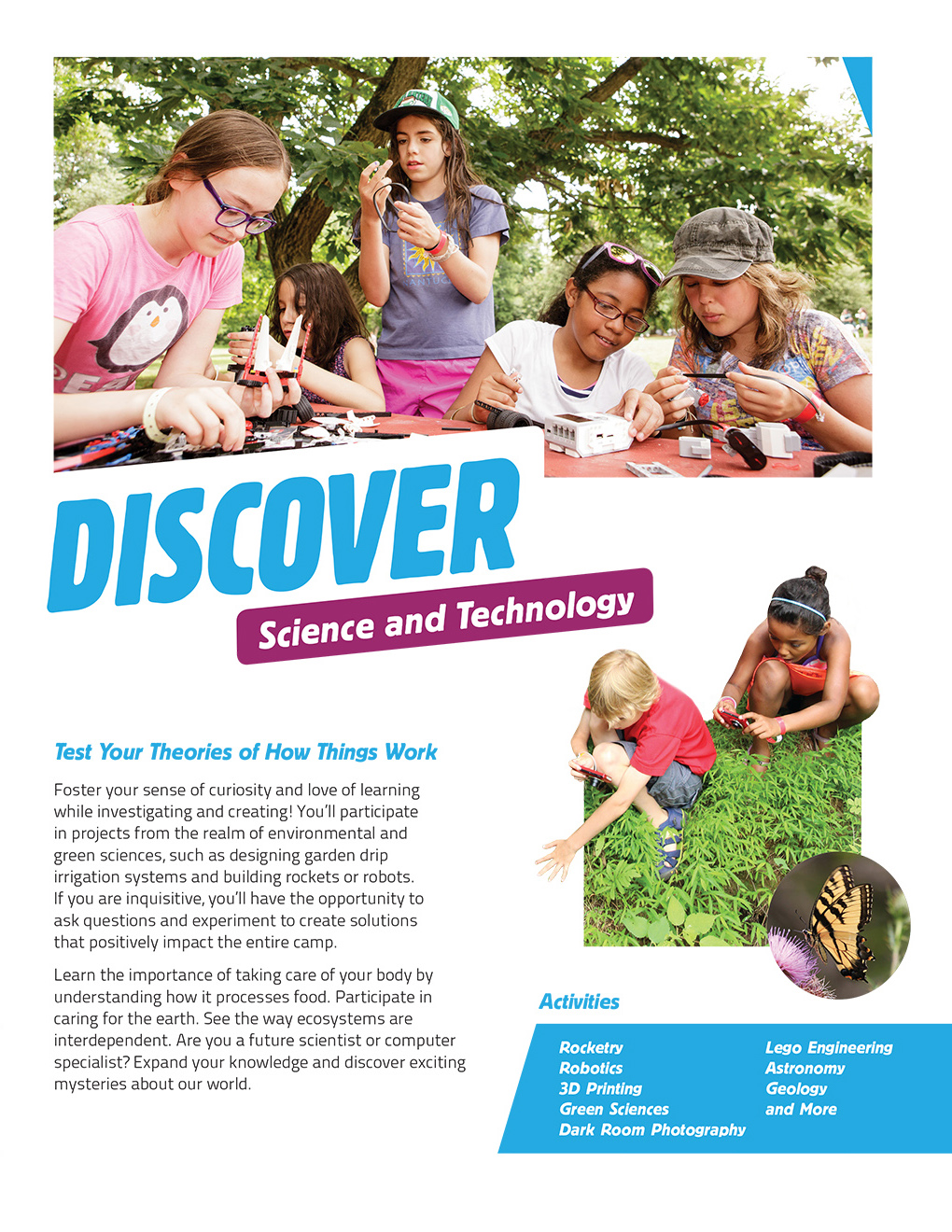
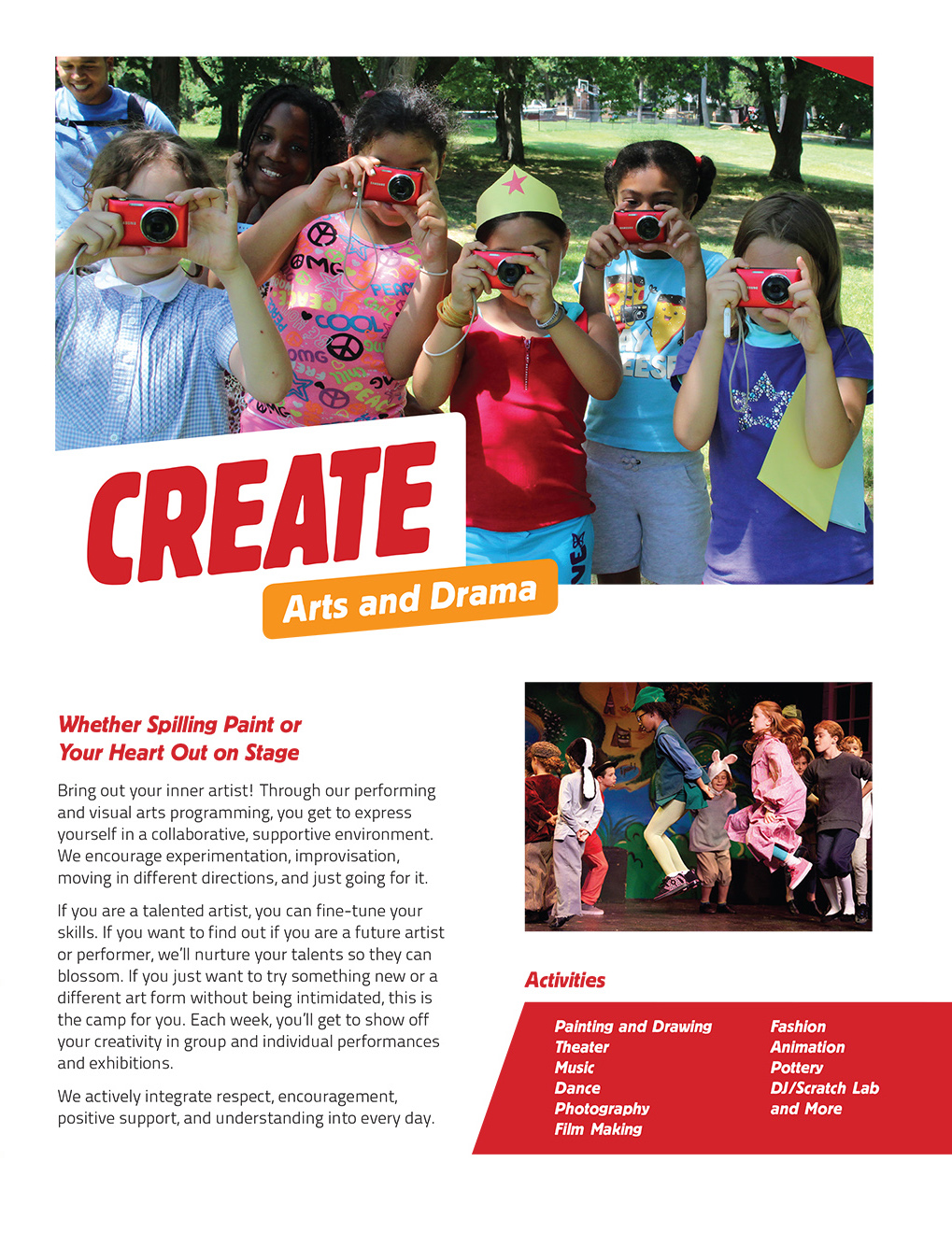
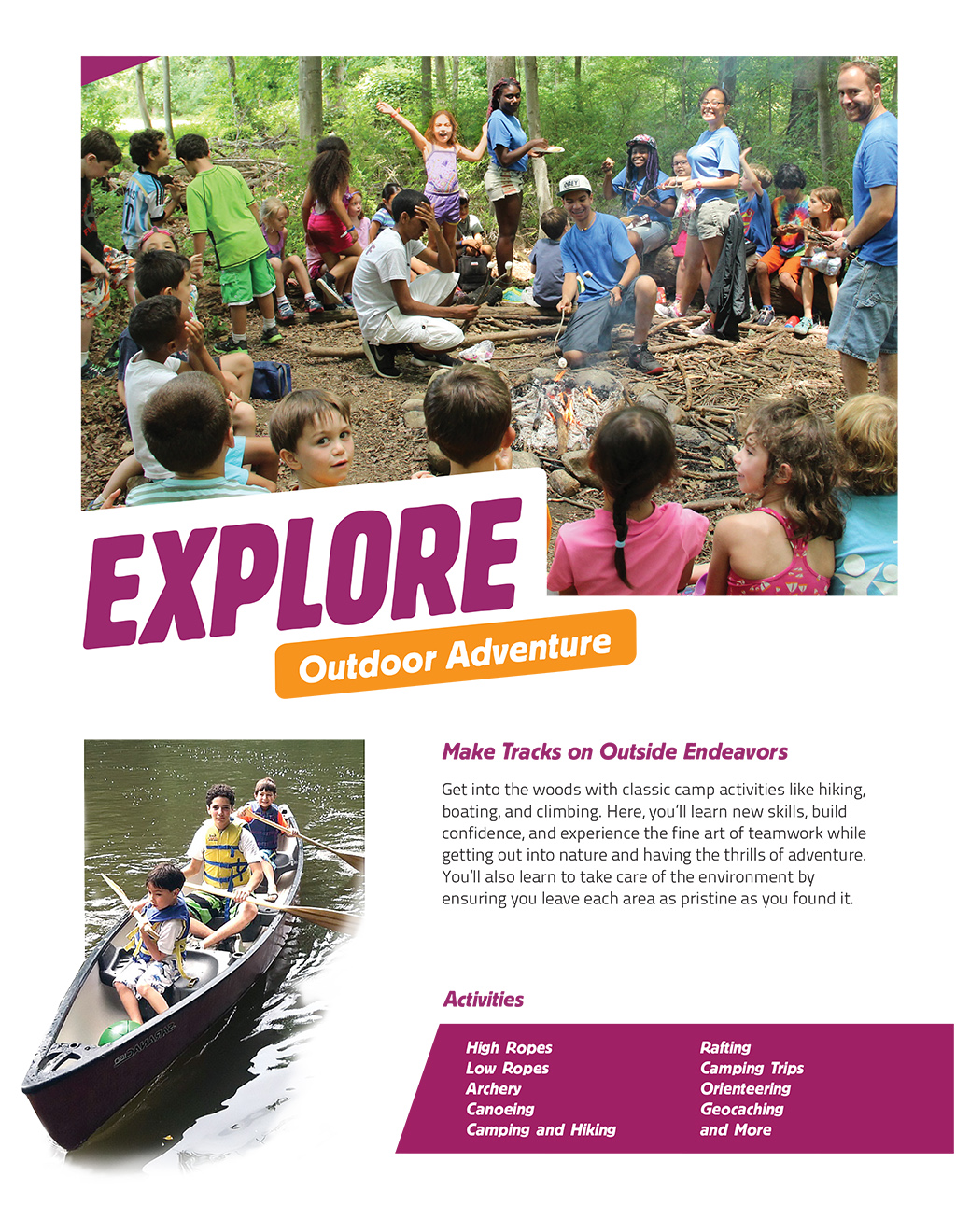
Website
As the first point of contact with many potential campers, the website showcases the new identity and makes a compelling case that positions the Consortium as a singular camping experience for Jewish and non-Jewish children. We created an engaging design to capture people’s attention while maintaining a professional, unified look for the organization that is consistent across the website and reinforces the brand messages.
The website features visual storytelling to showcase the vibrancy of the programs and tell the stories of campers. A clean navigation and user experience let site visitors easily find the specific information they need. Templates allow flexibility in the management of the site moving forward and responsive design adapts to tablets and mobile devices.
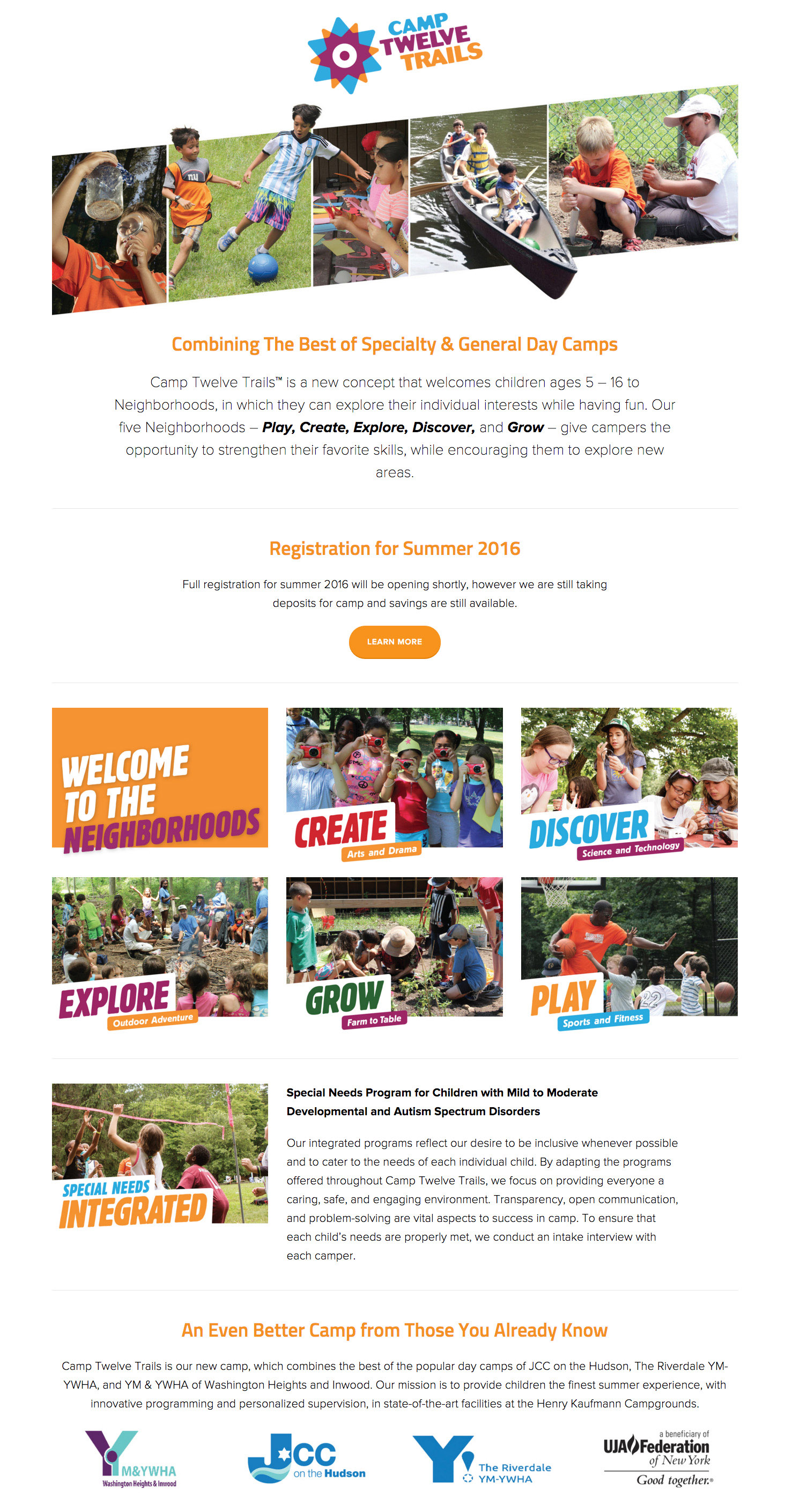
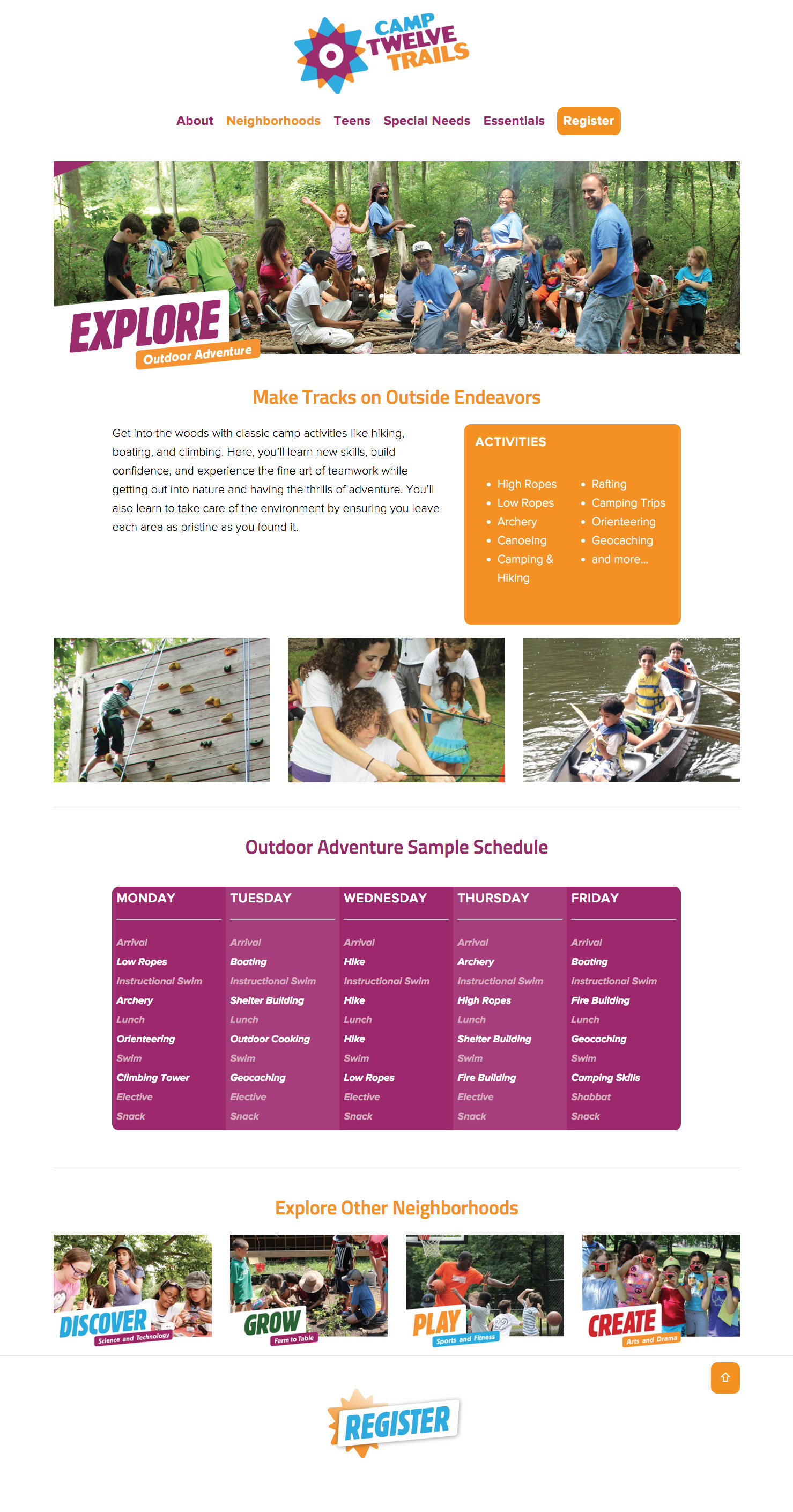
Results
The new camp has been successful in attracting campers.
In the first year, the new camp exceeded the combined registrations for the 3 camps from the prior year. The camp has received the most early bird registrations they have ever received with 205, compared with 180 the previous year.




